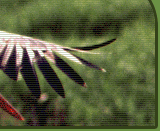Second Steering group meeting of the LIFE Project „Mires” In October 12, 2005 the Second Steering Group meeting of the LIFE Project “Implementation of Mire Habitat Management Plan“ took place in Olaine Museum of History and Art that is a project partner and participated in the organisation of the meeting. The meeting was opened by Dace Ozola from the Ministry of Environment - a chair of the Project Steering Group. During the Steering Group meeting project experts informed about the progress of the project actions carried out during the first year of the project as well as introduced the future activities. Second Steering group meeting of the LIFE Project „Mires” In October 12, 2005 the Second Steering Group meeting of the LIFE Project “Implementation of Mire Habitat Management Plan“ took place in Olaine Museum of History and Art that is a project partner and participated in the organisation of the meeting. The meeting was opened by Dace Ozola from the Ministry of Environment - a chair of the Project Steering Group. During the Steering Group meeting project experts informed about the progress of the project actions carried out during the first year of the project as well as introduced the future activities. At the start of the meeting project manager Mâra Pakalne gave an overview about the project sites, project objectives and actions. From the total of 24 actions the work is carried out for 12 of them. During the first year of the project the main project actions included elaboration of management plans, hydrological studies and elaboration of technical designs for building dams on the drainage ditches, nature trails and watching towers as well as monitoring site hydrology and the effectiveness of management actions, rising of public awareness on raised bog and fen values, including organisation of seminars and meetings with the 16 project partners. Nature trail is planned in the two project sites – Cena Mire and Vasenieki Mire from Stikli Mires Nature Reserve. Project habitat expert Valda Baroniňa told about the progress of the elaboration of the management plans and informed about the results of inventories carried out concerning flora, fauna and habitats. In all the project sites the rare plant species and habitats were mapped and the areas most important for birds and insects marked. As the result the zonation for the project sites was elaborated. Juris Nusbaums, the manager of the project main activities, told about the management actions in the project sites that include actions to stop the negative influence of drainage to the raised bog habitats by building dams on the drainage ditches and raising the water level, as well as building of nature trails and watching towers. The routes of the nature trails were planned together with the project partners. Project ornithologist’s suggestions were taken into account in planning the route. Technical designs for building dams on the drainage ditches are finalised. Project monitoring expert in hydrology Aigars Indriksons introduced with the results of hydrological studies and monitoring in the project sites. The results show that the site hydrological regime differs in the degraded and intact areas of the raised bogs. In the degraded areas it is much lower than in the intact parts of the raised bogs. Project monitoring expert Liene Salmiňa told about the habitat monitoring actions carried out in the project sites. In Cena, Stikli and Klani Mires the raised bog habitat monitoring areas are located. In Veseta Floodplain Mire Nature Reserve monitoring relevés are located in transition mires and fens where the management actions will include removal of shrubs and pine. Monitoring relevés are located on the drainage ditches, in the degraded areas and in the intact part of the mires as a reference area. Habitat monitoring methodology includes comparison of plant species and habitats in the relevés in the damaged and natural parts of the project sites including taking photos and marking with relevés with GPS. Project expert in public relations Ilze Salna informed about the aims of the project public relations – public participation in project actions, increase of responsibility as well as about the activities to fulfil these aims. These aims can be reached by informing local people with the help of mass media, inviting to participate in project meetings and discussions as well as by distribution of printed materials and production of audio-visual materials about the project sites. In 2005 there have been 16 publications with the total number of mass media contacts of more than 903.000. At the end of the Project Steering Group representative from Nature Protection Board Gundega Freimane mentioned the good work with the private landowners from Stikli and Klâňi Nature Reserves. It was also stressed that the valuable experience on mire management gained during the project should be published in a book that would be accessible to everybody who is interested in mire management and conservation. Dr. Mâra Pakalne Project manager | 






